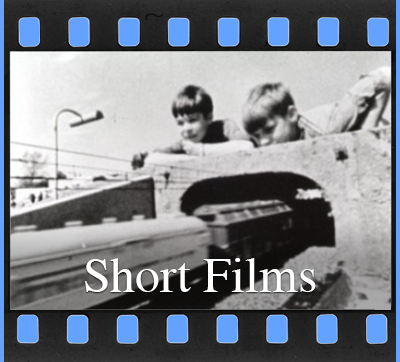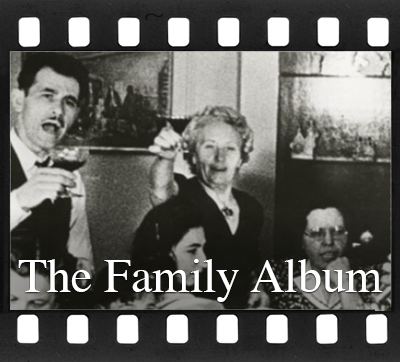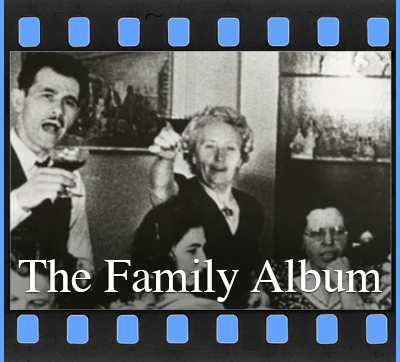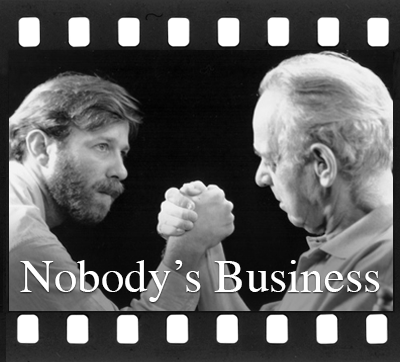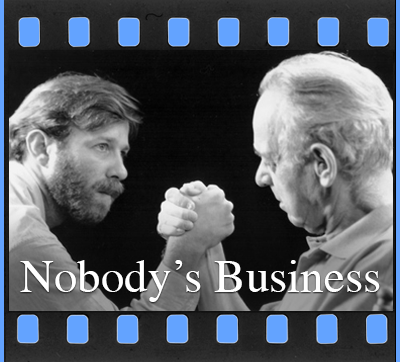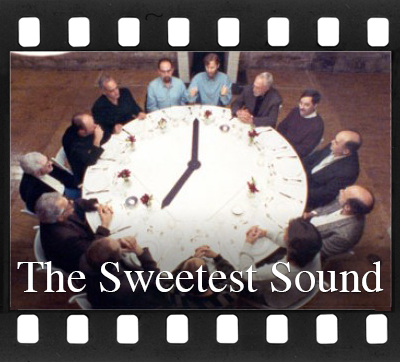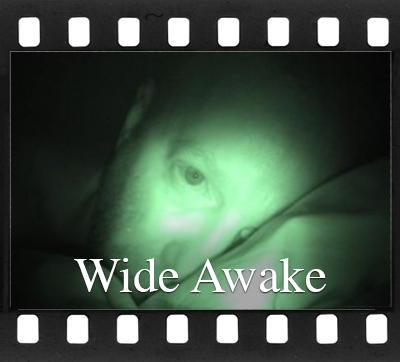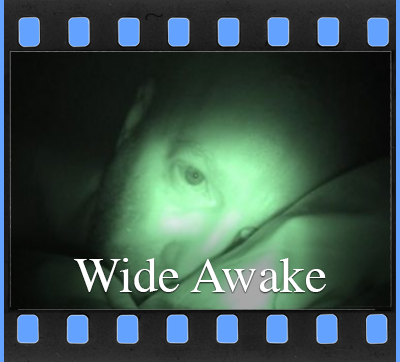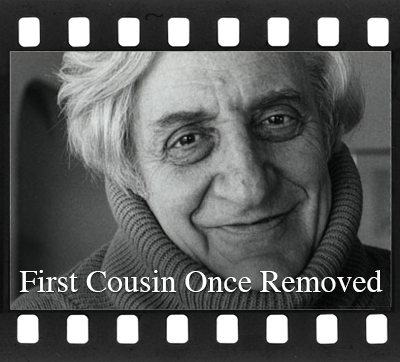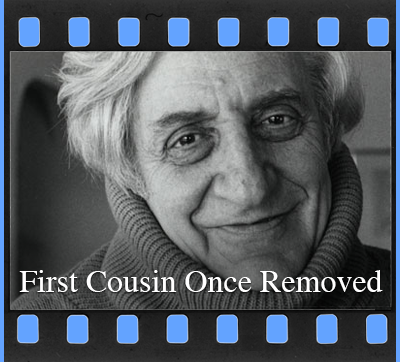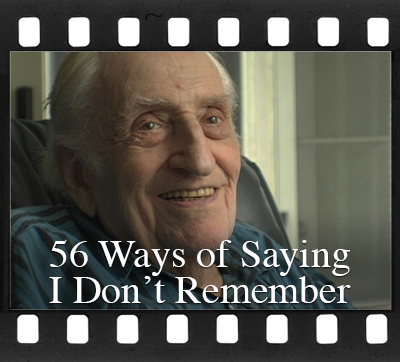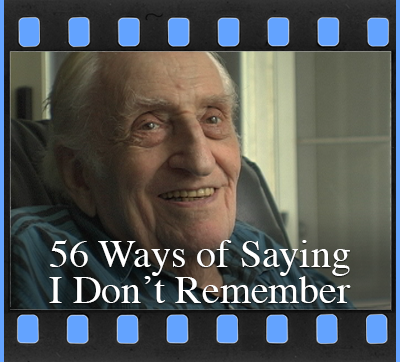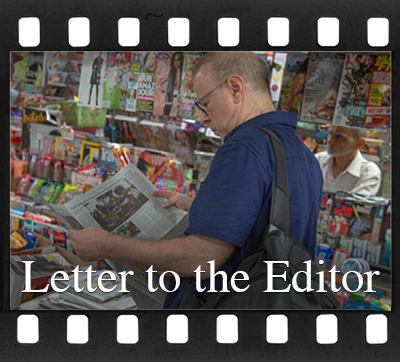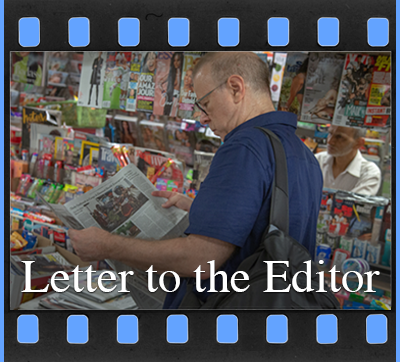Alan Berliner - Composer of Sound Images
by Tania Blanich
I remember very clearly the first time I saw Nobody's Business by Alan Berliner. The documentary — about the filmmaker's father — was funny, clever and poignant. The film's opening sequence in particular stayed with me long after I'd left the theater. In less than three minutes, Berliner masterfully blends archival and newly shot footage to delineate the film's thesis, exposition and resolution (or lack thereof). Actually, he sums up the film in just a few seconds with a bell sounding and a shot of two boxers coming out fighting. This filmic moment is the key to appreciating Berliner's great skill as a filmmaker and an editor.
Certainly, the boxers are the overall image that we take away from the film — the boxing match as the perfect and humorous metaphor for the father-son relationship revealed in the film. So enduring are those images that most viewers would be surprised to realize that the filmmaker uses boxing scenes only five times in the entire sixty-minute film. Why do those images linger so persistently? Because Berliner has reinforced them through clever sound editing, sprinkling various bells and clangs (a timer going off here, a dinner gong there) throughout the film as the aural complement to the visual leit motif.
We can trace Berliner's fascination with the interplay of image and sound to his earliest works, particularly the series of short, collage films he made in the early 1980s. Interesting films in their own right, they offer stream-of-consciousness commentary on the phenomenon of headline news (City Edition, 1980); nature, machines and technology (Myth in the Electric Age, 1981); the nature of nature (Natural History, 1983); and a symphony of images and sound (Everywhere at Once, 1985).
Viewed and studied both individually and as a series, the four films provide classic — and expert — examples of montage editing techniques. They also foreshadow Berliner's artistic trajectory, displaying in images and (more interestingly) through sound, the impeccable sense of pace, rhythmic acuity, humor and restraint that characterize the editing style of his later documentaries.
For it is the soundtracks of these four films that lift them above mere textbook examples of montage editing. Every student of cinema understands the importance of sound: it moves along the narrative, creates suspense, conveys emotion and reinforces the continuity of the action. Berliner takes sound design a step further, applying the theories of montage editing (intellectual montage or discontinuity editing, linkage or constructive editing, Hollywood montage and fast cutting) to the soundtrack as well as to the visuals.
A ninety-second sequence from City Edition, the earliest of the four shorts, provides a perfect example of Berliner's dexterous skill in continuity editing. The sequence begins with a baseball game. The batter gets a hit and jubilant teammates celebrate as the crowd roars its approval. A cut to the ecstatic crowd reveals not sports fans but rather delegates at a political convention. A few edits later, we watch runners in a race along with an encouraging crowd. The image of a single runner's shadow leads into a scene of citizens running from the police. The sequence culminates with visuals of a bonfire underlaid by the "screams" of an approaching fire truck's siren.
Visually, the 30 edits are seamless, with every scene carrying the idea(s) of the previous scene forward. However, each edit manages to be both exactly what we expect and a complete surprise. (For example, we're surprised to realize the cheering crowd is made up of political delegates and not the "expected" baseball fans.) Despite the virtuoso editing, the sequence owes much of its success to the sound continuity. Throughout the sequence, we've listened to sounds of "a" crowd expressing different emotions, from roars of approval to polite encouragement to screams of anxiety. The subtle changes in the crowd's expressions serve both as continuity for the entire sequence and also to reinforce the specific images we see.
The ear can absorb a number of distinct sound sources simultaneously — a good thing for viewers of Berliner's work. Otherwise, the multiple textures and layers of sound could overwhelm. Thankfully, Berliner shows restraint in his sound editing of these films, judiciously using black or blank screens and silences — both visual and aural — that allow us to reflect on the interplays of sound and image we've just experienced and to prepare ourselves for the next round of dazzling juxtapositions.
By carefully listening to a Berliner soundtrack, we begin to capture the complexities and nuances of his sound design and to appreciate his extraordinary skills as a soundtrack editor. I've always felt filmmakers were like orchestra conductors, bringing together the various elements and instruments needed to create music. In viewing Berliner's oeuvre — particularly the short, filmic symphonies from the 1980s — I realize that Berliner isn't simply a conductor but also a composer of sound images.
Tania Blanich is Program Coordinator for the Rockefeller Media Arts Fellowship Program.
- ◻ SHORT FILMS
- ◻ VIEW "EVERYWHERE AT ONCE" CLIPS
- ◻ VIEW "CITY EDITION" CLIPS
- ◻ NATURAL HISTORY NOTES
- ◻ MILLENNIUM PROGRAM NOTES (1985)
- ✓ ALAN BERLINER COMPOSER OF SOUND IMAGES
- ◻ POST FUTURE PAST PERFECT
- ◻ A TREASURE OF IMAGES
- ◻ PHOTOS



